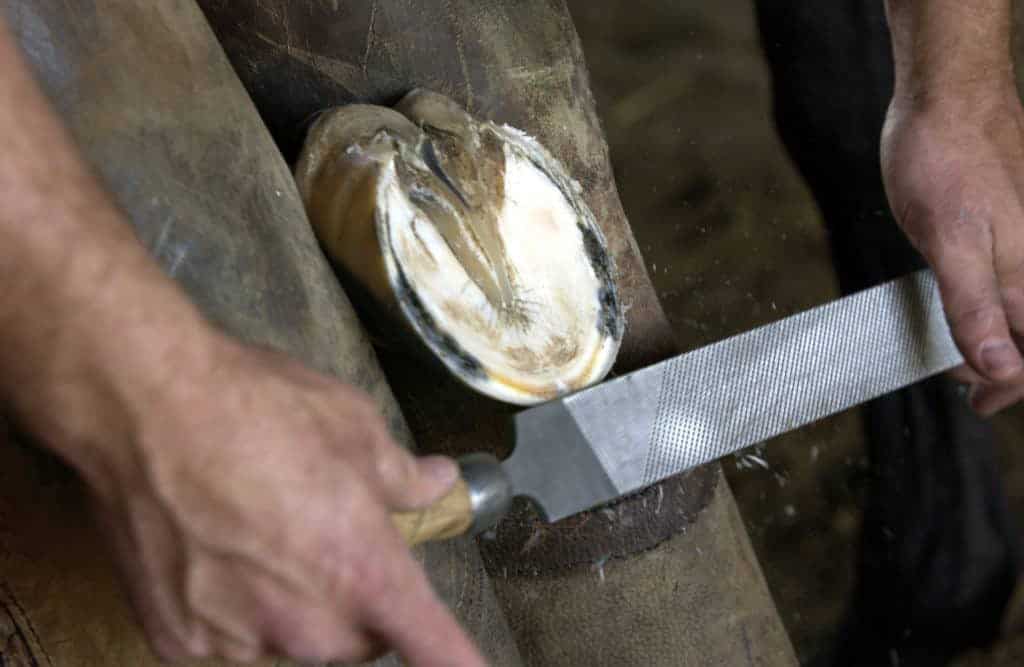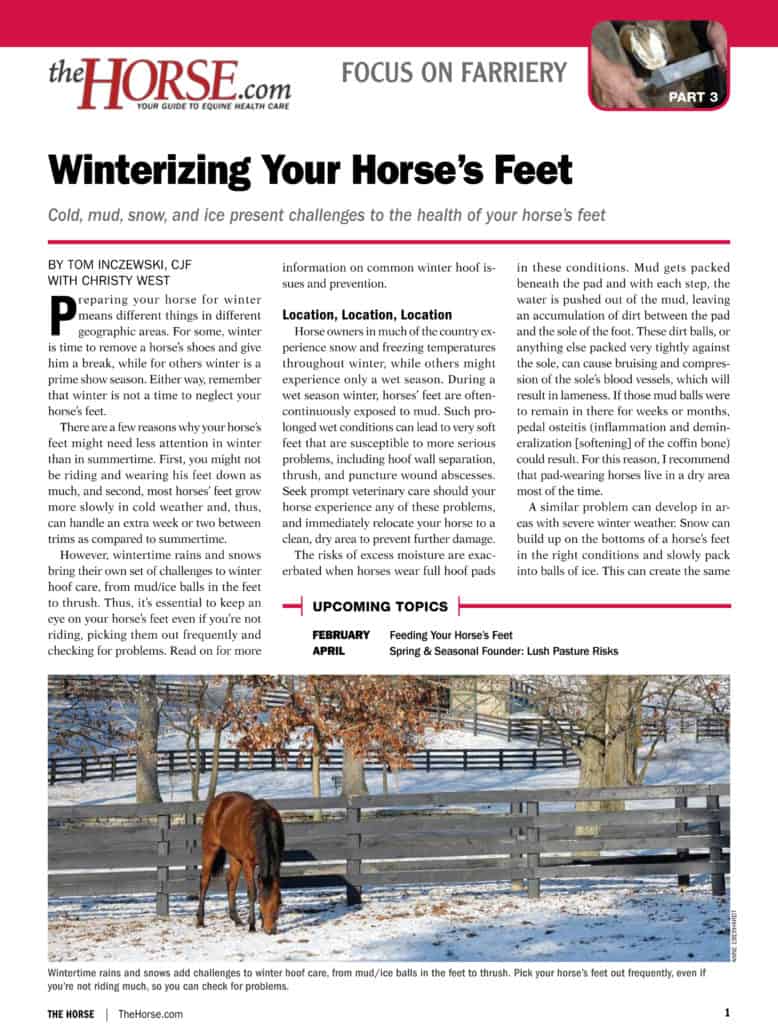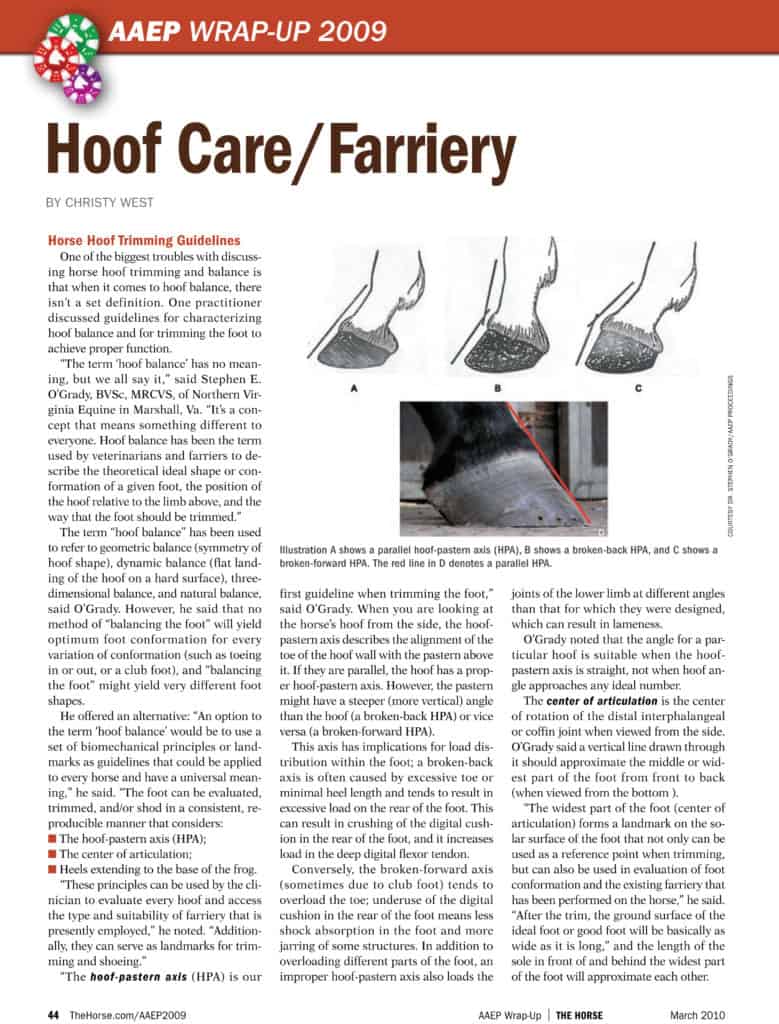
Study: Barefoot Trimming Can Impact Hoof Conformation
A specific trimming technique increased the hoof’s weight-bearing area and increased the heel angle.

A specific trimming technique increased the hoof’s weight-bearing area and increased the heel angle.

Study examines changes in toe angle and proximal hoof circumference without shoes.

The organization will promote the integrity of the industry and strengthen members’ knowledge and skill set.

Instructor and farrier Chris Gregory, CJF, FWCF, answers a reader’s question about trimming horses’ hooves too short during the 2012 International Equine Conference on Laminitis and Diseases of the Foot.

Dr. James Orsini shares the importance of bringing vets and farriers together to discuss laminitis at the 2012 International Equine Conference on Laminitis and Diseases of the Foot.
The three-part series will cover routine veterinary, farriery, and dental care.

One researcher says that it is very rare to see a spontaneous quarter crack not associated with sheared heels.
The summit will offer 68 hours of hoof care education focused around the theme “Zeroing in on Soundness.”
Certified farriers offered hands-on instruction in blacksmithing, tool-making, and horseshoe preparation.
Equine lameness exams, regenerative medicine, podiatry advancements, and case studies will be discussed.
Your equine athlete’s performance hasn’t been blue ribbon-worthy as of late. Or maybe your broodmare’s gaits are looking a little off kilter. Could long toes on the hind feet be to blame? According to the results of a recent study, the answer in some

There is much about laminitis that is not fully understood, but we know many cases are related to improper nutrition nutrition. Prevention tips include carefully timed pasture turnout to avoid high grass sugars.

Preparing your horse for winter means different things in different geographic areas. For some, winter is time to remove a horse’s shoes and give him a break, while for others winter is a prime show season.

Quite a few myths and misconceptions surround the practice of basic horse hoof care. This second installment of our farriery series focuses on some of the most common misconceptions heard from horse owners in the author’s farriery practice.
The New Bolton Center recently received a fully-constructed skeleton of a horse. Acquired in a raffle at the recent American Farrier’s Journal Annual Hoof Summit Conference in Cincinnati, the skeleton was given to the school by Bill

Guidelines for trimming horses’ feet and the results of a study evaluating toe grabs and catastrophic injury in racing Quarter Horses were discussed at the 2009 convention of the American Association of Equine Practitioners.
Stay on top of the most recent Horse Health news with
"*" indicates required fields